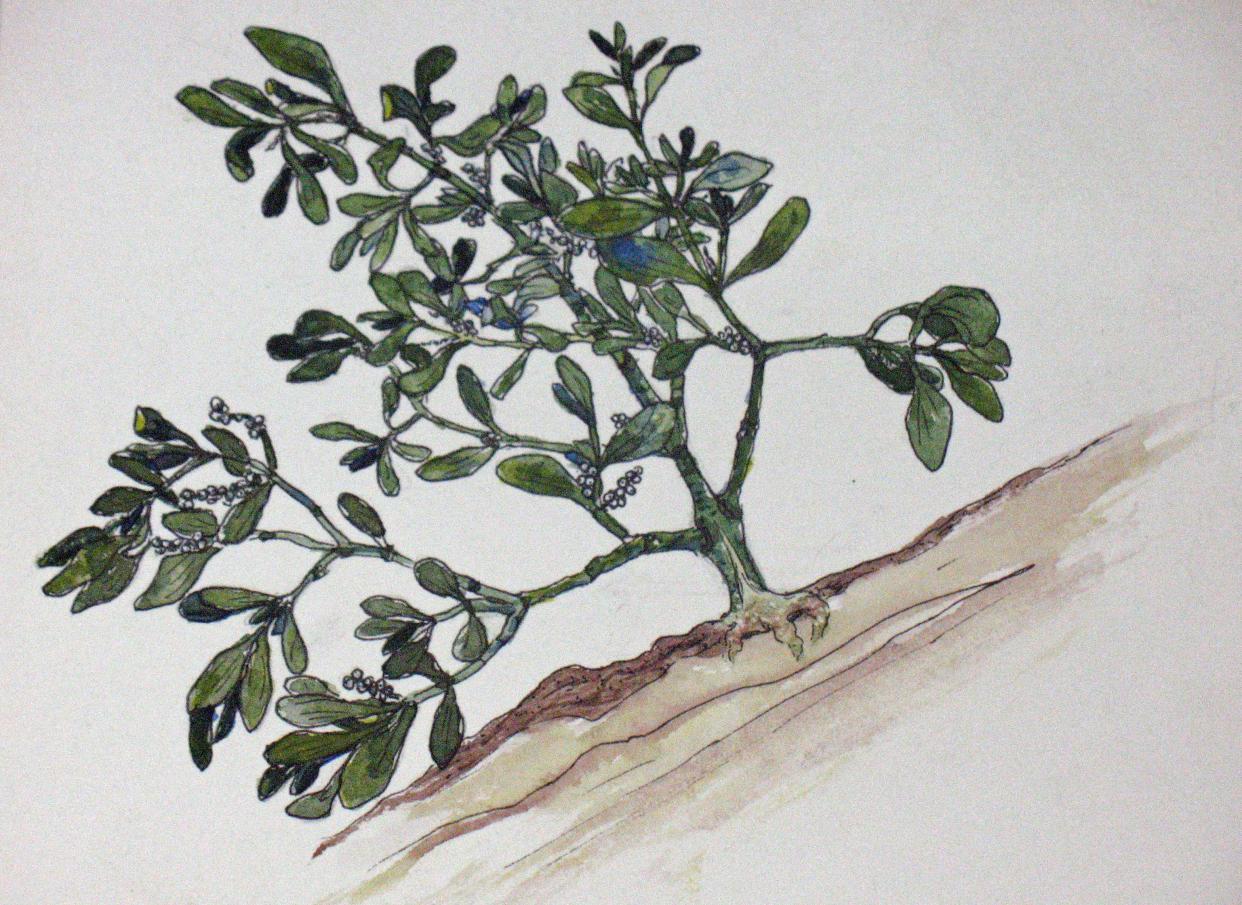Nature Journal: Winter reveals mistletoe growing in WNC trees

The cove we live in is surrounded on three sides by high ridges. One evening in early December, as I was walking down the trail that leads to our house, the sun set and the valley floor quickly darkened into a blue haze.
But high on the western rim the trees along the national park boundary were still catching the late light.
They stood clearly etched along the crest and seemed, as objects so often do in winter, to move closer. The bare gray limbs of every oak along one section of the ridge were hung with globular clusters of mistletoe.
Nature Journal: Opossums are highly adaptive creatures
It was not difficult at that moment to comprehend why mistletoe has for so long been an emblem of renewal.
The custom of decorating with mistletoe during New Year's observances goes back to the ceremonials of the Druids. The plant is a reminder of the ancient custom of keeping green things indoors in winter as a refuge for the spirits of the wood exiled by the cold.
Such high regard for mistletoe evolved, in part, because the plant is an evergreen. But there are many evergreens.
Mistletoe was, perhaps, singled out because it grew not on the earth, but on high. One of the oak species it often appeared on in Europe was English oak (Quercus robur), the most sacred tree in pagan thought.
More from Nature Journal: Unusual birds at your winter feeder? Blame 'irruptions'
The mistletoe revered by the European Druids was a different species (Viscum album) than the one that occurs in our part of the world, but the early settlers soon located an American look-a-like and adopted it as their ceremonial evergreen.
There are several mistletoe species in North America. The one commonly associated with the Christmas season is Phoradendron serotium, which is found throughout the East from New Jersey to Florida and into the Midwest.
The genus designation is descriptive of the mistletoe lifestyle: "phor" derives from the Greek word for "thief," while "dendron" means "tree." The plant does in fact siphon much of its sustenance from host trees.
And the tactic mistletoe employs to establish itself high in the boughs of deciduous trees is ingenious — yet another instance of the complex relationships that exist between plants and animals.
Mistletoe is dioecious — that is, like holly, there are separate male and female plants. It blooms from late fall into winter. The tiny pistillate flowers are pollinated by wasps and sawflies. Fruit may take more than a year to mature.
Mistletoe seeds are coated with a sticky substance (viscin) that is poisonous to humans, causing severe irritation of the digestive tract. However, numerous birds — notably cedar waxwings and bluebirds — are inordinately fond of the translucent white berries.
A seed that has been eaten retains its adhesive qualities in the bird's digestive tract. When excreted it clings to any branch that it hits.
Seeds also stick to the beaks and claws of foraging birds. When they pause to groom themselves on tree limbs, the birds unwittingly distribute mistletoe seeds from treetop to treetop throughout the woodlands.
Germinating seeds then penetrate their hosts via short root-like structures.
In her "Guide to Flowering Plants" (1994), Wendy B. Zomlefer provides a description of the plant's semi-parasitic lifestyle:
"The absorptive structures (haustoria or suckers) usually are interpreted as modified adventitious roots. ... These root-like strands penetrate the host and spread laterally, forming an anastomosing system that connects the parasite directly to the host xylem. ... Conspicuous swelling of the host tissue occurs at the point of attachment, and the base of the mistletoe itself becomes enlarged as well."
As the anthropologist James Mooney noted long ago, the ancient Cherokees were close observers of the natural world, "and some of their plant names are peculiarly apt. Thus the mistletoe, which never grows alone but is found always with its roots fixed in the bark of some supporting tree or shrub from which it draws its sustenance, is called by a name (uda'li), which signifies 'it is married.'"
Mistletoes often form colonies high in the crowns of a single tree or cluster of trees. Once the host trees shed their leaves in fall, their tenacious guests become apparent, serving as green emblems of an enduring strategy for survival that humans have readily identified with during the long, cold days of winter.
This column originally was published Dec. 17, 2011.

George Ellison is a naturalist and writer. His wife, Elizabeth Ellison, is a watercolor artist and papermaker who has a gallery-studio in Bryson City. Contact them at info@georgeellison.com or info@elizabethellisonwatercolors.com or write to P.O. Box 1262, Bryson City, NC 28713.
This article originally appeared on Asheville Citizen Times: Nature Journal: Winter reveals mistletoe growing in WNC trees

